Exposure to cigarette smoke induces overexpression of von Hippel-Lindau tumor suppressor in mouse skeletal muscle
- PMID: 22842216
- PMCID: PMC3468481
- DOI: 10.1152/ajplung.00007.2012
Exposure to cigarette smoke induces overexpression of von Hippel-Lindau tumor suppressor in mouse skeletal muscle
Abstract
Cigarette smoke (CS) is a well-established risk factor in the development of chronic obstructive pulmonary disease (COPD). In contrast, the extent to which CS exposure contributes to the development of the systemic manifestations of COPD, such as skeletal muscle dysfunction and wasting, remains largely unknown. Decreased skeletal muscle capillarization has been previously reported in early stages of COPD and might play an important role in the development of COPD-associated skeletal muscle abnormalities. To investigate the effects of chronic CS exposure on skeletal muscle capillarization and exercise tolerance, a mouse model of CS exposure was used. The 129/SvJ mice were exposed to CS for 6 mo, and the expression of putative elements of the hypoxia-angiogenic signaling cascade as well as muscle capillarization were studied. Additionally, functional tests assessing exercise tolerance/endurance were performed in mice. Compared with controls, skeletal muscles from CS-exposed mice exhibited significantly enhanced expression of von Hippel-Lindau tumor suppressor (VHL), ubiquitin-conjugating enzyme E2D1 (UBE2D1), and prolyl hydroxylase-2 (PHD2). In contrast, hypoxia-inducible factor-1α (HIF-1α) and vascular endothelial growth factor (VEGF) expression was reduced. Furthermore, reduced muscle fiber cross-sectional area, decreased skeletal muscle capillarization, and reduced exercise tolerance were also observed in CS-exposed animals. Taken together, the current results provide evidence linking chronic CS exposure and induction of VHL expression in skeletal muscles leading toward impaired hypoxia-angiogenesis signal transduction, reduced muscle fiber cross-sectional area, and decreased exercise tolerance.
Figures
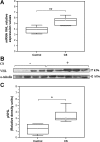
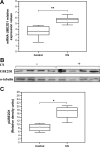
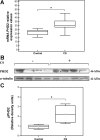
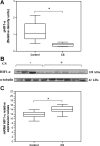
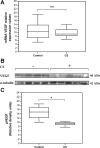
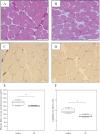
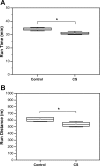
Similar articles
-
TNF stimulation induces VHL overexpression and impairs angiogenic potential in skeletal muscle myocytes.Int J Mol Med. 2014 Jul;34(1):228-36. doi: 10.3892/ijmm.2014.1776. Epub 2014 May 9. Int J Mol Med. 2014. PMID: 24820910
-
Prolyl hydroxylase 2 dependent and Von-Hippel-Lindau independent degradation of Hypoxia-inducible factor 1 and 2 alpha by selenium in clear cell renal cell carcinoma leads to tumor growth inhibition.BMC Cancer. 2012 Jul 17;12:293. doi: 10.1186/1471-2407-12-293. BMC Cancer. 2012. PMID: 22804960 Free PMC article.
-
Overexpression of von Hippel-Lindau protein in skeletal muscles of patients with chronic obstructive pulmonary disease.J Clin Pathol. 2009 Jan;62(1):70-6. doi: 10.1136/jcp.2008.057190. Epub 2008 Sep 25. J Clin Pathol. 2009. PMID: 18818266
-
Proline hydroxylation and gene expression.Annu Rev Biochem. 2005;74:115-28. doi: 10.1146/annurev.biochem.74.082803.133142. Annu Rev Biochem. 2005. PMID: 15952883 Review.
-
Melatonin and the von Hippel-Lindau/HIF-1 oxygen sensing mechanism: A review.Biochim Biophys Acta. 2016 Apr;1865(2):176-83. doi: 10.1016/j.bbcan.2016.02.004. Epub 2016 Feb 17. Biochim Biophys Acta. 2016. PMID: 26899267 Review.
Cited by
-
Integrating Mechanisms of Exacerbated Atrophy and Other Adverse Skeletal Muscle Impact in COPD.Front Physiol. 2022 Jun 3;13:861617. doi: 10.3389/fphys.2022.861617. eCollection 2022. Front Physiol. 2022. PMID: 35721564 Free PMC article. Review.
-
Immune-regulating effects of exercise on cigarette smoke-induced inflammation.J Inflamm Res. 2018 Apr 24;11:155-167. doi: 10.2147/JIR.S141149. eCollection 2018. J Inflamm Res. 2018. PMID: 29731655 Free PMC article. Review.
-
Smoking Alters Inflammation and Skeletal Stem and Progenitor Cell Activity During Fracture Healing in Different Murine Strains.J Bone Miner Res. 2021 Jan;36(1):186-198. doi: 10.1002/jbmr.4175. Epub 2020 Sep 24. J Bone Miner Res. 2021. PMID: 32866293 Free PMC article.
-
Main Pathogenic Mechanisms and Recent Advances in COPD Peripheral Skeletal Muscle Wasting.Int J Mol Sci. 2023 Mar 29;24(7):6454. doi: 10.3390/ijms24076454. Int J Mol Sci. 2023. PMID: 37047427 Free PMC article. Review.
-
Hypercapnia-Driven Skeletal Muscle Dysfunction in an Animal Model of Pulmonary Emphysema Suggests a Complex Phenotype.Front Physiol. 2020 Oct 29;11:600290. doi: 10.3389/fphys.2020.600290. eCollection 2020. Front Physiol. 2020. PMID: 33192616 Free PMC article.
References
-
- Baarends EM, Schols AM, Mostert R, Wouters EF. Peak exercise response in relation to tissue depletion in patients with chronic obstructive pulmonary disease. Eur Respir J 10: 2807– 2813, 1997 - PubMed
-
- Barnes PJ. New concepts in chronic obstructive pulmonary disease. Annu Rev Med 54: 113– 129, 2003 - PubMed
-
- Barreiro E, Del Puerto-Nevado L, Puig-Vilanova E, Pérez-Rial S, Sánchez F, Martínez-Galán L, Rivera S, Gea J, González-Mangado N, Peces-Barba G. Cigarette smoke-induced oxidative stress in skeletal muscles of mice. Respir Physiol Neurobiol 182: 9– 17, 2012 - PubMed
-
- Barreiro E, Peinado VI, Galdiz JB, Ferrer E, Marin-Corral J, Sánchez F, Gea J, Barberà JA. ENIGMA in COPD Project. Cigarette smoke-induced oxidative stress: A role in chronic obstructive pulmonary disease skeletal muscle dysfunction. Am J Respir Crit Care Med 182: 477– 488, 2010 - PubMed
-
- Barreiro E, Schols A, Polkey MI, Galdiz JB, Gosker HR, Swallow EB, Cornell C, Gea J. Cytokine profile in quadriceps muscles of patients with severe COPD. Thorax 63: 100– 107, 2008 - PubMed
Publication types
MeSH terms
Substances
Grants and funding
LinkOut - more resources
Full Text Sources

